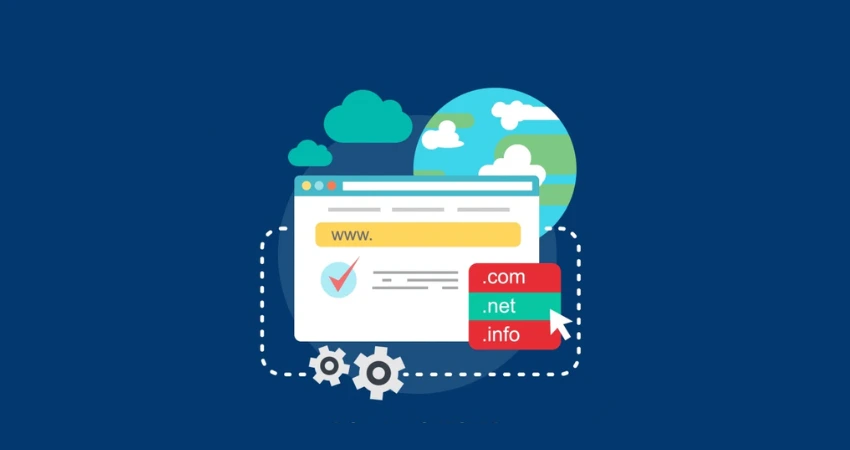If you’re searching for a one-stop shop for learning how to increase your website’s domain authority, you’ve come to the right place.
Did you know that the domain authority of a website determines 20% of its SEO success?
For instance, having a high website domain authority site makes getting first-page results for a search simpler than having a low domain authority site.
Take a look at the infographic below to learn about a few key ranking factors that Google takes into account when determining a website’s position in search results.
This detailed post will be valuable if you’re looking for practical strategies to improve your website’s domain authority in 2021.
There are a few things to consider before we go into how to increase your site’s domain authority.
Check your current domain authority (DA): The Moz toolbar can help you assess your website’s domain authority. You may use their service to find the DA of any website (which is free).
It’ll also come in handy if you’re trying to increase your site’s authority through link building. The better a site’s backlink profile is, the higher its DA.

Table of Contents
How can you increase the domain authority of your website in 2021?
- Use external links intelligently to increase the number of times users spend on your website.
- A new DA is set to be released by Moz.
- Use the three link-building tactics to your advantage.
- Hazardous backlinks should be eliminated.
- Look for Google penalties and learn how to avoid them.
- Maintain a user-friendly website.
- Make a white hat for yourself. Approach to search engine optimization
- Alternatives to Moz Domain Authority
- What Should You Do If the Domain Authority (DA) of Your Website Drops?
- Frequently Asked Questions on How to Increase Domain Authority in 2021
- In 2021, last thoughts on how to boost a website’s domain authority
What does domain authority entail, and what does it imply?
The Moz team (#1 SEO blog) created a metric called Domain Authority (DA) that predicts how well a website will rank in Google searches. The greater a website’s DA, the more likely it is to rank well. It’s as simple as that.
What does the term “page authority” mean?
It’s nothing more than predicting how well a specific website would rank in the search engine results pages (SERPs) (SERP). Moz came up with a scale of 0 to 100 for this. The stronger the rating ability, the higher the score.
It uses data from the Mozscape web index to calculate Page Authority (PA), which includes link counts, MozRank, and a range of other indicators. It fluctuates when they change the algorithm that calculates Page Authority (PA). Page Authority, like Domain Authority, is determined using a machine learning algorithm (DA).

In 2021, how can you improve your website’s domain authority?
What is the definition of dwell time?
Dwell time is an important On-Page SEO measure that determines how well your website performs in the following areas:
User participation
Duration of the session (also known as a bounce rate) and click-through rates (of your search results)
The more individuals spend time reading a page (article, infographic, or video) on your site, the higher it will rank.
Dwell time refers to how long your blog readers stay on your site before clicking the back button. Because Google favours sites with longer stay times, your domain authority will rise as well if you work to improve your dwell time.
Here are a few effective ways to enhance the amount of time people spend on your website:
Begin writing blog entries that are 2000 words or longer.
Every blog article should have a list of similar posts underneath it.
Interlinking should be done on a regular basis and with care.
Create new tabs for external links.
Let’s take a closer look at them now.
1. Start writing blog entries that are 2000 words or more
Short content is no longer relevant. If you wish to compete with others, start writing blog entries that are 2000 words or longer. Longer postings attract more visitors and create more leads. Google always favours material that is thorough and lengthy.
If you want to rank in Google’s top 10 organic results, your blog article should be at least 2000 words long. It takes effort to create such an extensive kind of content, but it draws backlinks and organic visitors.
Look for evergreen content ideas and hot subjects on Google Trends. In your niche, write “how-to” tutorials and frequently asked questions.
Collect data and conduct a scientific investigation. Before producing a substantial piece of material, do a lot of research.
- Make a solid framework and a rough sketch of your thoughts.
- Start writing when you’ve organized your thoughts.
- To prevent distractions when writing, use the Pomodoro technique.
- Long paragraphs should be broken up into 2 to 3 phrases while writing.
- Before posting, double-check for grammatical and spelling errors.
2. Underneath each article, show similar posts
You must ensure that people do not quit your site after reading the first post in order to boost page visits and lower bounce rates. So, what are your options?
Under each post, show related posts. WordPress has a number of plugins that can help with this.
Another plugin for similar posts. It’s one of the most popular similar post plugins for WordPress, and it supports both text and thumbnails for related articles.
Posts that are contextually relevant: By contextually matching posts, this plugin seeks to increase relevance. It will show images and text for linked posts.
WordPress-related articles: It’s a lighter version of the more well-known related posts plugin. It displays similar posts using caching. It is speedier and does not cause your website to slow down.
Posts about Yuzo: It’s simple to set up and contains all of the functionality you’d expect from a related posts plugin.

3. Link to older entries with interlinking to increase the website’s domain authority.
Interlinking is simply linking to older blog articles. Focus on finding the relevant keywords to interlink. You can bring a lot of traffic to your blog if you do it correctly.
What can interlinking accomplish?
- Increases the amount of organic search traffic
- It helps you rank higher for the terms you want.
- It raises the number of page visits.
- The pages with the most links have higher domain authority.
Here are several WordPress plugins that will automatically interlink your posts:
Smart link for SEO: It will link to your previous posts automatically. Words like “blogging tips” can be customized to connect to certain posts. It not only links to prior entries but also links to future posts.
It adds internal links to your blog content, which is worth mentioning. You may set it up to show suggestions based on the pages you’ve visited.
It aids the crawling of each and every page by the search engine.
4. Use new tabs to open external links
Using new tabs to open external links can assist reduce bounce rates. Because if they go down the rabbit hole, your blog will be waiting for them in a new tab. If you use WordPress, you may utilize the open external links in a new window plugin.
Also, minimize your website’s bounce rates to boost your total domain authority. The bounce rate, also known as the exit rate, is a metric that determines how users behave on your website.
The percentage of visitors that depart your website without viewing any subsequent pages is known as the bounce rate (i.e. on their initial visit). Your SEO and, as a result, your total domain authority will improve if your bounce rate or exit rate is minimal.

When it comes to external links, be cautious.
When it comes to increasing your domain authority, your external links and backlink profile are quite important. Take a look at the graphic below to see how crucial backlinks are in terms of increasing your domain authority.
Here’s something more to think about. It’s difficult to enhance the domain authority of your sites if you give out too many links from your site to others without really collecting fresh backlinks. So, while linking to other sites, references, or web pages, use caution.
When connecting out to other websites, use the rel=”nofollow” element as a general guideline.
- Plugins sTools
- Products from affiliates
- Platforms for social media
- Reviews of software, etc.
A new DA is set to be released by Moz to increase the website’s domain authority.
A new domain authority algorithm will be deployed in March 2021, according to Russ Jones, Moz’s Principal Search Scientist.
Moz is concentrating on providing a more accurate and useful domain authority metric that removes spam, improves correlations, and most importantly, updates Domain Authority in reaction to Google changes.
After that, the new DA release, your website’s DA may fluctuate. However, We have no way of knowing if the DA will fluctuate much, Let’s take a look at what Moz has to say about their recent DA improvement.
So, when will the new DA update be released?
The most recent DA updates will be available on March 5th, 2019.
You may compare your own site’s DA to that of your competitors to discover how relevant and effective Moz’s new DA update is.
If your website’s DA rankings drop as a result of the recent DA modifications, don’t worry; it’s not a valid or reliable search statistic that has no bearing on your Google ranks.
Make use of the three link-building strategies.
1. Blogging as a guest
In terms of link building, guest posting is usually a winner. However, most bloggers fail to perform excellent guest blogging since it requires time, commitment, work, and a few methods.
Below All some guest blogging methods to consider:
- Only send your message to authoritative sites in your niche. Make an effort to write fantastic material for them.
- To expand your email list, use guest posts. After tLeadpages may be used to construct landing pages to generate an email list.
- Make contact with the blog owner before pitching the idea. Comment on their blog entries, respond to their social media updates, and so on to accomplish this.
- Once you’ve written for them, advertise your guest post the same way you would your own.
- To gain a quick hit, write inspiring pieces or ones that include popular bloggers.
2. Use of infographics
Infographics are quite popular. These are the most popular and well-liked articles on the internet. Infographics may transform drab statistics into engaging content. Backlinks to visual material are more common than backlinks to textual information.
To make an original and one-of-a-kind infographic, follow these steps:
- Before you create it, make sure you have the appropriate information.
- Know who your target market is.
- Develop a fascinating story to engage readers once you’ve chosen your key topic.
- Create an infographic.
- It should be promoted on all social media platforms.
3. Hold freebies to increase link popularity.
Backlinks are crucial for search engine optimization. The majority of bloggers do not only provide hyperlinks. So, what are your options?
Contests. Yes, it’s a marketing technique that aids in brand visibility, recognition, and speedy sales.
There are three different sorts of competitions:
- Giveaways: Who doesn’t like getting something for nothing? As a consequence, freebies have become one of the best famous sorts of content. This is a great strategy for attracting bloggers and influencers to help spread the word about your company.
- Product promos are related to giveaways, though they focused on the products instead of the brand, This is the greatest strategy for introducing a new product or service to the market.
- The reward is the product itself, which draws people in. It draws in bloggers and aids in the generation of linkages in the process.
- Codes for discounts: These are useful if you want to target a certain demographic.

Remove toxic backlinks
The bulk of websites witnessed their search rankings drop when Google introduced the Penguin 2.0 update in 2013. The availability of harmful backlinks is the reason for this.
What are poisonous backlinks, and how can you avoid them?
These are the backlinks that hurt your website’s search engine optimization. Purchased links, link systems, and links from gambling or payday loan websites, for example, are all considered harmful.
What are the benefits of removing harmful backlinks?
Google discovers that your blog has a large number of harmful backlinks, it will lower your site’s DA and most likely remove it from its database.
If you see a dramatic decline in traffic and receive a Google warning, it’s possible that your blog contains harmful backlinks.
If you’re obtaining connections from sites that aren’t indexed by Google, you should be concerned.
Here’s how to get rid of those pesky backlinks to increase the website’s domain authority.
Please contact the site’s proprietors and request that your connections be removed.
To get rid of bad backlinks, use Google’s Disavow tool.
If your website is new, has little traffic, and has a lot of negative backlinks, it’s preferable to delete it.
After that you’ve removed all of the poisonous backlinks, submit a reconsideration request to Google. Make a modest request and describe the measures you took to resolve the issue. If you wish to rank highly, you should treat the removal of poisonous backlinks as a priority.
may also use Google’s disavow links function to remove toxic backlinks from your website.
